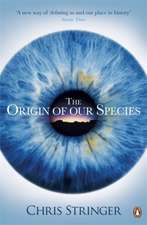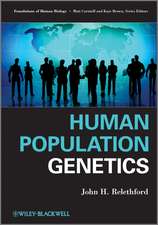Creation and Evolution: A Biosemiotic Approach
Autor Friedrich S. Rothschilden Limba Engleză Paperback – 31 mar 2000
| Toate formatele și edițiile | Preț | Express |
|---|---|---|
| Paperback (1) | 418.55 lei 6-8 săpt. | |
| Taylor & Francis – 31 mar 2000 | 418.55 lei 6-8 săpt. | |
| Hardback (1) | 1109.18 lei 6-8 săpt. | |
| Taylor & Francis – 8 dec 2017 | 1109.18 lei 6-8 săpt. |
Preț: 418.55 lei
Nou
Puncte Express: 628
Preț estimativ în valută:
80.09€ • 84.07$ • 66.48£
80.09€ • 84.07$ • 66.48£
Carte tipărită la comandă
Livrare economică 10-24 aprilie
Preluare comenzi: 021 569.72.76
Specificații
ISBN-13: 9780765806864
ISBN-10: 076580686X
Pagini: 380
Dimensiuni: 152 x 229 x 20 mm
Greutate: 0.51 kg
Ediția:1
Editura: Taylor & Francis
Colecția Routledge
Locul publicării:Oxford, United Kingdom
ISBN-10: 076580686X
Pagini: 380
Dimensiuni: 152 x 229 x 20 mm
Greutate: 0.51 kg
Ediția:1
Editura: Taylor & Francis
Colecția Routledge
Locul publicării:Oxford, United Kingdom
Cuprins
Part One: The Role of Inner Adaptation in the Biosemiotic Theory of Evolution; Chapter One: Foundation of the Method in the Search for Meaning; Chapter Two: The Present Situation of Mankind; Chapter Three: The Influence of the Phenomenology of Ludwig Kluges on Biosemiotics; Chapter Four: The Mediated Directness of Communication and Its Evolution Within the Sign Systems; Chapter Five: The Cycle of Understanding in Communication; Chapter Six: The Antagonistic and Complementary Dynamics in the Origins of Communication; Chapter Seven: God as the Origin of Communication; Chapter Eight: Analogies of Reflection in the Superposition of Sign Systems; Chapter Nine: Diploidity of Cells and the Development of the Dialogue; Chapter Ten: Potential and Real Aspects of Communication for the Mediation of Inner and Outer Systems; Chapter Eleven: The Neural System as Mediator of the Soul; Chapter Twelve: The Noetic System and the Freedom of Intellectual Acts; Chapter Thirteen: The Relation of Mental Acts to the Dominant Hemisphere; Chapter Fourteen: Thinking and Speaking; Chapter Fifteen: Parallels to Biosemiotics in Viktor von Weizsaecker’s Writings; Part Two: The Inner-Adaptation Between Sign Systems; Chapter Sixteen: The Philosophical Biology and Anthropology of Hellmuth Plessner; Chapter Seventeen: Inner Adaptation in the Analogies of Cybernetics; Chapter Eighteen: A Biosemiotic View of French Structuralism; Chapter Nineteen: Transcendental Function and the Symbolic Structure of the Nervous System; Chapter Twenty: Symbolic Aspects of Form and Arrangement of Ganglion Cells and Remarks on the Cerebellum; Chapter Twenty-One: Inner Adaptation and Wakefulness, Sleep, Dreaming, Hypnosis, Trance: Inner Unity in the State of Wakefulness; Chapter Twenty-Two: On Sleep; Chapter Twenty-Three: Manifestation of Inner Adaptation in Play; Chapter Twenty-Four: Feelings and Their Expression; Chapter Twenty-Five: Laughing; Chapter Twenty-Six: The Smile; Chapter Twenty-Seven: Crying; Part Three: Inner-Adaptation in Religion and History; Chapter Twenty-Eight: Values as Objectives in the Inner Adaptation of the Noetic System; Chapter Twenty-Nine: Truth; Chapter Thirty: Holiness: Phenomenological Description and Biosemiotic Interpretation; Chapter Thirty-One: The Experience of Holiness in Ecstasy; Chapter Thirty-Two: The Search for Redemption and the Conflicts of Inner Adaptation; Chapter Thirty-Three: Different Ways of Inner Adaptation; Chapter Thirty-Four: Inner Adaptation and the Greeks; Chapter Thirty-Five: Inner Adaptation and the People of East Asia; Chapter Thirty-Six: Yoga; Chapter Thirty-Seven: Buddhism and Zen; Chapter Thirty-Eight: Christianity; Chapter Thirty-Nine: Inner Adaptation in the Cultural History of Europe: Reflection of Neurally-experienced Life in the Middle Ages; Chapter Forty: The Beginning of Modern Times and the Reflection of Gastrular Mediated Experiences; Chapter Forty-One: Descartes and the Development of Scientific Thought; Chapter Forty-Two: The Perfection of the Development of the Noetic System; Chapter Forty-Three: Possibilities of Change of Consciousness, Asymmetry Between Left and Eight Side; Chapter Forty-Four: The Asymmetries of the Body; Chapter Forty-Five: The Psychophysical Relationship and Parapsychology; Chapter Forty-Six: The Asymmetry of the Cerebral Hemispheres; Chapter Forty-Seven: The Significance of Reflection (Self-Consciousness) for the Generation of a New Phase of Communication; Chapter Forty-Eight: Change of Mind Based on Reflection of Man Being the Child of God; Chapter Forty-Nine: Inner Adaptation and the Phenomena of Parapsychology; Chapter Fifty: Comparison of Erich fantsch’s Theory of Evolution with the Theory of Biosemiotics; Chapter Fifty-One: The Paradoxical Nature of Man and His Relationship to the Decussation of Fibers in the CNS; Chapter Fifty-Two: Inner Adaptation as Dialogue
Descriere
Based on his research in comparative embryology, Rothschild argues that the central nervous system of animals as well as humans conveys meaning just like language, and is not merely aimed at adapting to the external environment. His theory of biosemiotics introduces the concept of inner adaptation.















